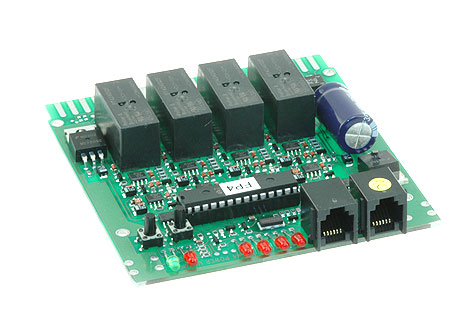
My PM42s seem to correctly trip on track shorts and auto-reverse reliably, but the power briefly drops out during these events, and when the PM42s attempt a fault recovery into a persistent short circuit, why is this?
No power on earth can stop the track voltage of the booster from collapsing to a low value when a true short circuit is present. This is simply Ohm’s law in action!
Actual track voltage seen depends on: the loop resistance of the short circuit, the current capacity of the booster and power supply and whether the Booster employs "smart" fault detection and recovery along with fault current management.
The PM42 works by sensing what it "believes" is fault current (determined by its trip current setting) in a sub-district of a whole district served by a single booster. When a fault is detected, the PM42 disconnects the short-circuited sub-district from the rest of the district. This allows the rest of the track served by the booster to return to proper operation very quickly.
The PM42 operates faster than the decision threshold of the booster in determining when a fault exists on the layout to shutdown the sub-district before any "welding" can occur! After a shutdown has occurred, the PM42 periodically checks to see if the fault is cleared so that it can "restart" the track area that was shut down. When the initial fault occurs and also during some "re-tries," the track will see a brief short. This is unavoidable. Most well designed decoders and equipment will work fine during these brief power interruptions.
Careful operation and maintenance of the track and plant, especially switches, and training operators not to foul turnouts set against them will address most track short circuit problems.